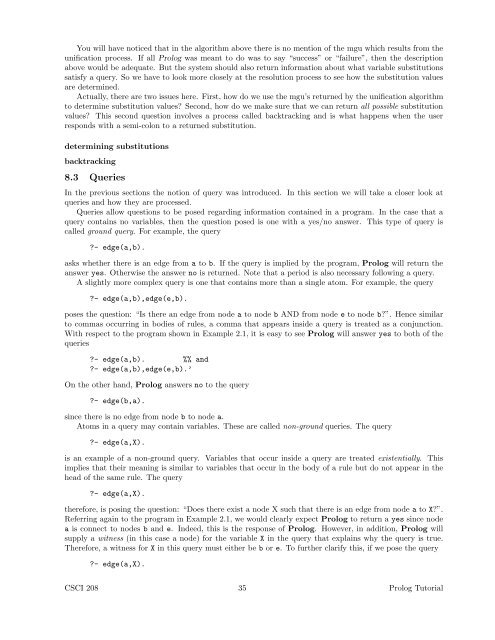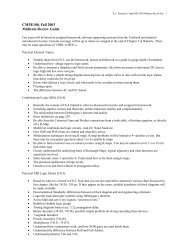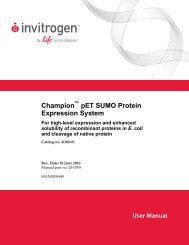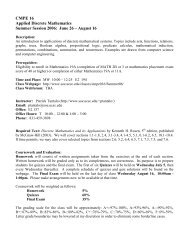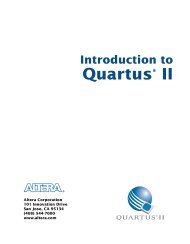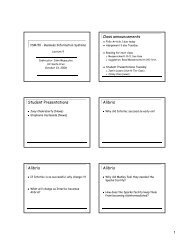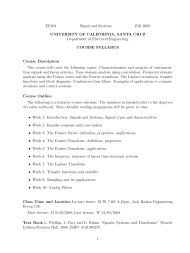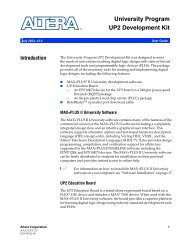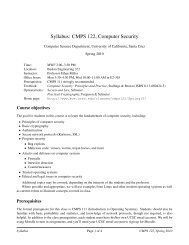Prolog A Tutorial Introduction - Courses
Prolog A Tutorial Introduction - Courses
Prolog A Tutorial Introduction - Courses
Create successful ePaper yourself
Turn your PDF publications into a flip-book with our unique Google optimized e-Paper software.
You will have noticed that in the algorithm above there is no mention of the mgu which results from the<br />
unification process. If all <strong>Prolog</strong> was meant to do was to say “success” or “failure”, then the description<br />
above would be adequate. But the system should also return information about what variable substitutions<br />
satisfy a query. So we have to look more closely at the resolution process to see how the substitution values<br />
are determined.<br />
Actually, there are two issues here. First, how do we use the mgu’s returned by the unification algorithm<br />
to determine substitution values? Second, how do we make sure that we can return all possible substitution<br />
values? This second question involves a process called backtracking and is what happens when the user<br />
responds with a semi-colon to a returned substitution.<br />
determining substitutions<br />
backtracking<br />
8.3 Queries<br />
In the previous sections the notion of query was introduced. In this section we will take a closer look at<br />
queries and how they are processed.<br />
Queries allow questions to be posed regarding information contained in a program. In the case that a<br />
query contains no variables, then the question posed is one with a yes/no answer. This type of query is<br />
called ground query. For example, the query<br />
?- edge(a,b).<br />
asks whether there is an edge from a to b. If the query is implied by the program, <strong>Prolog</strong> will return the<br />
answer yes. Otherwise the answer no is returned. Note that a period is also necessary following a query.<br />
A slightly more complex query is one that contains more than a single atom. For example, the query<br />
?- edge(a,b),edge(e,b).<br />
poses the question: “Is there an edge from node a to node b AND from node e to node b?”. Hence similar<br />
to commas occurring in bodies of rules, a comma that appears inside a query is treated as a conjunction.<br />
With respect to the program shown in Example 2.1, it is easy to see <strong>Prolog</strong> will answer yes to both of the<br />
queries<br />
?- edge(a,b). %% and<br />
?- edge(a,b),edge(e,b).’<br />
On the other hand, <strong>Prolog</strong> answers no to the query<br />
?- edge(b,a).<br />
since there is no edge from node b to node a.<br />
Atoms in a query may contain variables. These are called non-ground queries. The query<br />
?- edge(a,X).<br />
is an example of a non-ground query. Variables that occur inside a query are treated existentially. This<br />
implies that their meaning is similar to variables that occur in the body of a rule but do not appear in the<br />
head of the same rule. The query<br />
?- edge(a,X).<br />
therefore, is posing the question: “Does there exist a node X such that there is an edge from node a to X?”.<br />
Referring again to the program in Example 2.1, we would clearly expect <strong>Prolog</strong> to return a yes since node<br />
a is connect to nodes b and e. Indeed, this is the response of <strong>Prolog</strong>. However, in addition, <strong>Prolog</strong> will<br />
supply a witness (in this case a node) for the variable X in the query that explains why the query is true.<br />
Therefore, a witness for X in this query must either be b or e. To further clarify this, if we pose the query<br />
?- edge(a,X).<br />
CSCI 208 35 <strong>Prolog</strong> <strong>Tutorial</strong>


